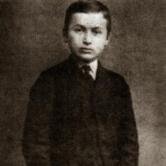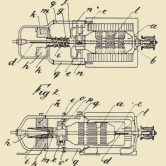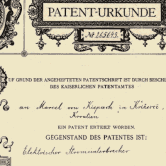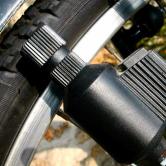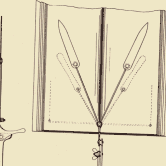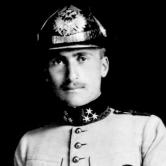Personage > Marcel Kiepach, Esq.
Marcel Kiepach was born in Križevci on 12 February, 1894. He had three sisters, and finished Elementary School in Križevci. He attended a Gymnasium in Zagreb, and a photograph of him wearing his officer’s uniform, was made during that period (around 1905). The photograph has been preserved, and it was made in the studio of Mihail Merčep, a man who later became famous for constructing airplanes, in which the first Croatian aviator, Dragutin Novak, flew. Marcel may have witnessed test-flights of Croatian airplanes taking place in June and July, 1910, at the Zagreb runway Črnomerec, when all the citizens gathered around to witness this special event. Marcel was only 15 at the time and he must have been thrilled by the impressive aircrafts constructed by Slavoljub Penkala and Dragutin Novak.The whole Kiepach family had a powerful influence on the town. The family owned a castle and a property in the center of Križevci until the end of World War II.
Although Marcel had a passion for technology since he was a child his parents didn’t allow him to study electrical engineering, following in the footsteps of his role model, Nikola Tesla, and he couldn’t convince them otherwise. It was exactly Nikola Tesla who inspired Marcel to try to come up with some inventions, and Marcel was relying on Nikola’s work in his inventions related to magnetic induction, dynamo, electro motor, transformer, and transmitting sound waves. Marcel’s father, Josip, insisted that his only son should engage in agriculture, so he enrolled him into the Institute of Agriculture in Haale (Saale), in Germany, and after a year he sent his son to Hochschule für Bodenkultur (the Academy of Forestry) in Vienna. It was only after two more years at the Academy that Marcel managed to enroll into the University of Electrical Engineering in Charlottenburgu, Germany, to "satisfy his desire ". Thus he made it clear he didn’t want to be involved into running a large property, or engaged in agriculture or forestry. His parents grew to accept his decision. What’s more, they provided him with the financial support. Marcel inherited a big property rich in culture, history and natural beauty from their parents. His father’s ancestors, the Esquire family Kiepach of Haselburg, came from Tirol, and married the nobles from Croatia.
A scientist in shorts
Marcel learned some foreign languages when he was a child, and his interest in electrical engineering stemmed from reading technical magazines. Many influential and prominent people were visiting the Kiepach family, so Marcel had been exposed to wide cultural and scientific influences even as a child. He had the opportunity to observe the modern steam powered machines used in farming. The design and operation of those machines occupied him more than horses and carriages. He would walk around the blacksmith workshop on the family estate, asking what the different tools and machines were used for. During his school days in Zagreb, Marcel was especially interested in the magnetic effect, electricity, acoustics, transmission of sound waves, engines, and transformers. His parents supported him, and his father, Josip, had noticed his son’s extraordinary talent when Marcel was still a child, so he was buying Marcel technical books and gave him money for his patents. He patented his first inventions in different European countries when he was only 16. Of course, The European Patent Offices had no idea that they were dealing with a scientist in shorts, since all the inventions Marcel submitted were described in detail, and accompanied by drawings.
On March 16, 1910, Marcel submitted his patent gyro compass (patent number 246656) at the Kaiserliches Patentamt (Imperial Patent Office) in Berlin. The compass needle always points north regardless of the metal objects or magnetic fields nearby. On June 9, 1912, he submitted another patent (patent number 265645) -a special circuit breaker in which the pressure rise is obtained mainly by gas compression, and which could be used for example in X-ray machines. Marcel also submitted his gyro compass patent to the Patent Office in London, which informed him of the acceptance of his patent in 1911 (patent number 28696). Thus, Marcel de Kiepach was registered as a patent owner residing at Theaterplatz (Theatre Square) 8, Zagreb, Croatia, a landowner. Patent application also contains a detailed description of Marcel’s patent: It is an improvement to the traditional compass.
The Imperial Patent Office in Berlin also registered the name of Marcel von Kiepach from Križevci, Croatia. He submitted an application on November 2, 1911, and the National Institute of Industrial Property with the Ministry of Commerce and Industry (France) informed him of the acceptance of his patent of the dynamo lighting systems (patent number 436.270) on January 19, 1912. In the application, the invention is referred to as a dynamo for vehicles, different from the other devices in that it is a continuous current dynamo, which constantly powers the lights, without any fluctuations or voltage surges, thus preserving battery life.
To Harness the Wind
Marcel’s dynamo could also be activated by using wind, which shows that the young scientist was a daring visionary who, like Leonardo da Vinci, turned to nature for inspiration. He also proved to be a visionary in the field of energy, since he used the energy of the future. The electric power plants were not widely used at the time, and it was this energy that attracted Marcel’s attention. It didn’t take long for him to notice all the advantages of using electrical energy and the electricity for public lighting, so he patented a low voltage transformer which could be used for dental and miners’ lamps, as well as in lightning system. This kind of system was named Kiepach-Weiland system after Marcel Kiepach and another famous scientist, Heinrich Weiland.
Marcel was also involved in designing and assembling a direct current electrical motor, bifilar motor, variometer, and induction cord. He studied resonance curves, and the transmission of sound waves, as seen from the letters he exchanged with Arthur Kuhn, an engineer from Berlin, who helped him with patent applications and prototype constructions.
On July 13, 1914, Arthur Kuhn sent Marcel a cheque for 111, 50 German Marks, a sum which was supposed to cover his services. Marcel was at University in Charlottenburg at the time. He worked on an interesting and a bit funny invention, which was supposed to help his mother read books in bed, before going to sleep- a page turner that automatically turns the pages of a book. The device could also be useful for musicians, who wouldn’t have to turn the pages of their music while playing.
He was unaffected by stardom
Marcel was an exceptionally talented child. He had talent for technology, drawing, and playing the violin and the piano, so he could have easily pursued the career in humanities or art. Still, he remained a charming and humble man unaffected by the stardom he enjoyed in his childhood, when Zagreb newspapers were filled with praise for his inventions.
The inventions of Zagreb Gymnasium student, Marcel Kiepach attracted attention throughout the country, which is evident from an article in Narodne novine (Official Gazette), which reads: These inventions are so important that they are expected to receive worldwide acclaim. Thus, we extend our congratulations to the young student and wish him all the best with his work on his inventions (and we hear there are dozens of them)
World War I Volunteer
The anonymous journalist was right-Marcel’s inventions did receive worldwide acclaim, and are today used in everyday objects, household machines, cars, and ships. Still, Marcel never got to see the fruits of his labors because he died at the age of 21, on August 13, 1915, at the Russian front, in the First World. Two months after his death, on September 31, 1915, Zagreb daily newspapers Jutarnji list published the obituary honoring his memory.
Marcel was enlisted as the first volunteer of the County of Bjelovar-Križevci, as it was called at the time. He also tried to enlist as a volunteer in Berlin, but was rejected on the grounds that he was too young. His heroic actions in Galicia won him the Silver Medal of Honor. After his death he was nominated for the Golden Medal of Honor. His remains were repatriated to Križevci in 1917. On the day of his funeral, January 20, 1917, many people lined the streets of Križevci in mourning, and flocked to his family grave site at the town cemetery, where he was buried with full military honors. In his honour,Croatian poet Nikola Pavić-Hortenzije wrote a poem which was read by a student, Blanka Degen, at the funeral.
A town physicist and a writer, Fran Gundrum of Oriovac, gave an inspiring eulogy at Marcel’s funeral saying Marcel was one of the greatest men of Križevci.


